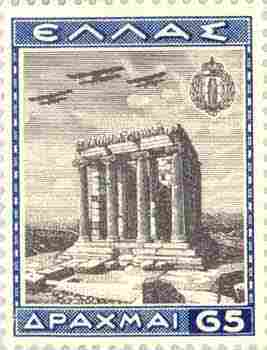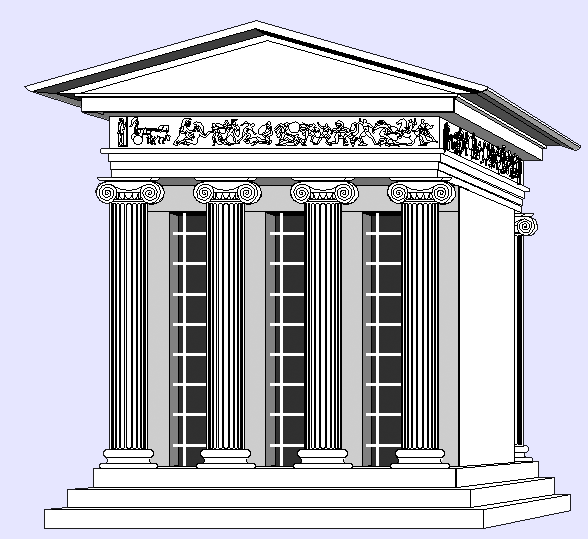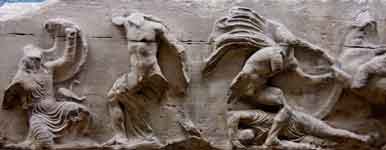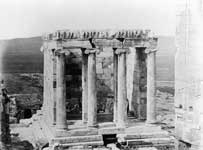.

Nike means "Victory" in Greek, and Athena was worshiped in this form, as goddess of victory, on the Acropolis, Athens. Her temple was the earliest Ionic temple on the Acropolis sanctuary, completed c. 427 BC during the unrest of the Peloponnesian war. Its small size was compensated by its prominent position at the south east corner of the Acropolis, on a steep bastion to the right of the entrance (propylaea); there the citizens worshipped the goddess in hope of a prosperous outcome in the long war fought on land and sea against the Spartans and their allies. The Temple of Athena Nike was an expression of Athens' ambition to be the leading Greek city state in the Peloponnese.
Temple architecture and sculpture
The Temple of Athena Nike is a tetrastyle (four column) Ionic structure with a colonnaded portico at both front and rear facades (amphiprostyle), designed by the architect Kallikrates. This building was erected on top of the remains of an earlier sixth century temple to Athena, which the Persians had sacked in 480 B.C. The total height from the stylobate to the acme of the pediment while the temple remained intact was a modest 11 feet. The ratio of height to diameter of the columns is 7:1, the slender proportions creating an elegance and refinement not encountered in the normal 9:1 or 10:1 of Ionic buildings. Constructed from white pentelic marble, it was built in stages as war-starved funding allowed.
A cult statue of Athena Nike stood inside the small 5 m x 5 m naos. The account by ancient writer Pausanias describes the statue as made of wood, holding a helmet in her left hand, and a pomegranate (symbol of fertility) in the right. Nike was originally the "winged victory" godess (see the winged Nike of Samothrace) The Athena Nike statue's absence of wings led Athenians in later centuries to call it Nike Apteros (wing-less victory), and the story arose that the statue was deprived of wings so that it could never leave the city.
The friezes of the building's entablature were decorated on all sides with relief sculpture in the idealized classical style. The north frieze depicts a battle between Greeks entailing cavalry. The south freize shows the decisive victory over the Persians at the battle of Plataea. The east freize shows an assembly of the gods Athena, Zeus and Poseidon, rendering Athenian religious beliefs and reverence for the gods neccessary to the social and political climate of 5th Century Athens.
Some time after the temple was completed, around 410 B.C a parapet was added around it to prevent people from falling from the steep bastion. The outside of the parapet was adorned by exquisitely carved relief sculptures showing Nike in a variety of activities, the best-known illustrating Athena adjusting her sandle.


Reconstruction of the Temple of Athena, drawing of parts of the Frieze (drawings by José-Manuel Benito Álvarez)

Acropolis, Athena Nile, Athens BM 424

Callimachus (architect, sculptor)
Mnesikles: The Propylaia and Kallikrates: the Nike Temple
Greek temple Encyclopaedia Britannica, 1965
Greece: From Mycenae to the Parthenon, Henri Stierlin, TASCHEN, 2004
| Ancient Greece
Science, Technology , Medicine , Warfare, , Biographies , Life , Cities/Places/Maps , Arts , Literature , Philosophy ,Olympics, Mythology , History , Images Medieval Greece / Byzantine Empire Science, Technology, Arts, , Warfare , Literature, Biographies, Icons, History Modern Greece Cities, Islands, Regions, Fauna/Flora ,Biographies , History , Warfare, Science/Technology, Literature, Music , Arts , Film/Actors , Sport , Fashion --- |
Retrieved from "http://en.wikipedia.org/"
All text is available under the terms of the GNU Free Documentation License

